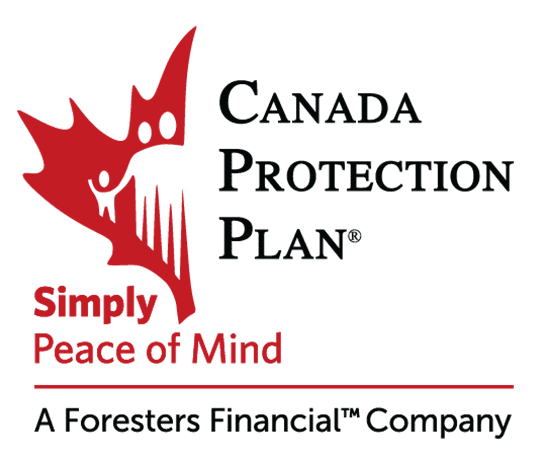
By David Aston | Moneysense
You’ve probably seen the hard-hitting ads from robo-advisor owner Questrade in which average-looking investors accuse their sleezy-looking financial advisors of imperiling their finances. “That’s 30% of our retirement gone in fees,” says one of the beleaguered investors. Of course the assumption in the ads is investment fees are a net drain that provide no significant benefit in return. That raises the provocative question as to whether ditching your advisor is a good idea or not. Doing so can make sense in some situations, but in others it would be a huge mistake. You have to look at your individual situation and make your own judgement.
We discuss below some of the main factors to consider.
Like the Questrade ad implies, it’s true that getting rid of advisors can save you a tonne in investment fees. That applies whether you’re a traditional do-it-yourself investor using a discount brokerage account or opt instead for the part-way solution of a robo-advisor, which automates some of the advisor’s functions while offering very limited human assistance. But contrary to what the Questrade ads imply, there is also a lot of evidence that advisors often add plenty of value that far outweighs their fees in certain situations. While quantifying advisor value is problematic, three studies that attempt to do so found that potential advisor value-added varied from 1.59% to over 3% a year, according to a 2015 review by financial planning researcher Michael Kitces (“Evaluating Financial Planning Strategies and Quantifying Their Impact”, available at Kitces.com)
The evidence shows that advisors often have plenty of scope to add value in both the management of investments and the larger realm of financial planning. The thing is, these benefits are bound to vary tremendously based on the individual situation, the sophistication of the investor, and the quality of the advisor, among other factors. Financial advisors vary enormously in qualifications and over-all ability to add value, and advice comes in lots of different forms and cost levels. In general, paying for advice makes more sense if: you have a reasonably large amount of money (good advice becomes cost-effective when its cost is spread over a reasonably large portfolio and top advisors often don’t take small accounts); you have complicated needs in areas like planning for retirement, tax, or estate (great advice has greater impact); you don’t have a lot of investment knowledge or you’d rather spend your time on other things (you’re paying for something you lack or don’t have time to do properly). Also, you need to be able to discern the difference between good advice and mediocre or poor advice. Advisor knowledge levels vary enormously, from what are essentially mutual fund salespeople with basic qualifications to highly-trained experts with advanced qualifications like the certified financial planner (CFP) and chartered financial analyst (CFA) designations.
If you want to go it alone as a do-it-yourself investor, you don’t have to be an investment expert, but you need at least basic investment knowledge and confidence in your self-sufficiency. At a minimum you have to understand the basics of setting an appropriate asset allocation and rebalancing regularly, and you need to be able to commit the time to manage your own money properly. It’s critical that you have the fortitude to stay the course when markets become turbulent. Panic selling in a financial crisis such as happened in 2008-2009 would have a disastrous impact on your long-term returns. For do-it-yourself investors who embrace a passive approach, you need to be able to pick individual ETFs and GICs to fulfill your chosen asset allocation. While that’s not too difficult, the mushrooming growth in ETF choices makes it a bit more complicated than it used to be. The simplest approach is to pick broad-based classically passive ETFs that will ensure your performance closely tracks market results. You need a little more knowledge to pick from among ETFs that follow “strategic beta” strategies (also known as “smart beta”), such as “value” or “momentum” or “low volatility”, while avoiding some of the more faddish or risky ETFs that you may not properly understand. Do-it-yourself investing is more complicated if you adopt an active approach, since you have to find a basis for picking specific investments. Very few individual investors have the time or expertise to do this entirely based on their own analysis. So it helps if you can tap sources like MoneySense, investment websites or newsletters for help picking individual stocks or mutual funds. However, the media are filled with picks of varying quality from different prognosticators, so you need at least moderate investment knowledge to sort out those that make sense and fit your situation from those that don’t.
Robo-advisors offer a part-way solution that can work well if you don’t have the interest or knowledge to meet the basic requirements of do-it-yourself investing. Robo-advisors get you to complete an online questionnaire to help come up with an asset allocation composed of specific ETFs that fit your circumstances, that then rebalances automatically. Canadian robo-advisors also provide limited access to human advisors, but this isn’t the right approach for you if you need lots of human attention.
You have several options if you need detailed financial planning help, such as for preparing a retirement plan. With many advisors, financial planning help is covered by the over-all investment fees that you pay, although the quality varies. If you’re a do-it-yourself investor or this need isn’t met by your advisor, then you can also directly hire a fee-for-service financial planner. The truth is many financial advisors provide significant value, but ultimately you’ll have to decide whether they are fully worth the cost or not. Kitces offers, “In practice, the ‘behaviour change’ benefit of financial advising may be most akin to those who seek out personal trainers for their physical fitness as well—it’s a service that most would benefit from, but everyone makes their own personal judgment about whether the cost is worthwhile relative to the incremental improvement…”
Finding the Right Level of Investment Advice |
||
| Type of Investing | Typical Investing Fees (as a % of Assets) (1) |
What You Should Consider
|
No Advice – Do-It-Yourself (DIY) Investing |
||
| DIY ETF investor | 0.1% to 0.4% per year |
Generally the easiest and one of the cheapest ways to be a do-it-yourself investor.
|
| DIY investing in stocks and bonds or GICs | Negligible (2) |
It’s cheap, but requires lots of time and knowledge to build your own portfolio properly from the ground up with individual stocks and bonds
|
| DIY investing in low-fee mutual funds | 1.0%-1.3% |
Easier than DIY investing with individual stocks, but harder than picking ETFs since you have to offset higher fees. (Steer clear of high fee mutual funds which include fees for advice you don’t get. (3))
|
Limited Advice |
||
| Robo-Advisors (Online Portfolio Managers) | 0.7 to 1.0% (4) |
Simple, easy and fairly cheap. You have to be comfortable turning over everything to the robo-advisor and having very limited human contact. May be simplistic if you have complex needs.
|
Full Service Advice – Investing with an Advisor |
||
| Mutual fund advisor | About 2% |
Generally the most expensive way to get advice, but still can be well worth it if you find quality advice. You may find no other option for getting full-service advice if you have a small balance account.
|
| Advisor using ETFs | 1.0% to 1.4% |
An emerging new option. ETF investing is relatively simple, so look for the advisor to provide lots of financial planning help or other services to provide value for the fees.
|
| Full-service broker or private investment counselor using an active approach | 1.0% to 1.5% |
A relatively cost effective way to get full-service advice with an active approach, but established advisors often require minimum account sizes of $500,000 or more.
|
| Notes: (1) Total annual fees including investment fees embedded in the cost of mutual funds and ETFs, as well as advisory fees which may be charged separately. (2) Typically you pay transaction costs of $10 or less per trade on a discount brokerage account, which is negligible as a percent of assets if you have a moderate sized account and trade infrequently. (3) Unfortunately, it requires a lot more knowledge and effort than it should just to distinguish low-fee mutual funds suitable for do-it-yourself investors from high-fee mutual funds which include embedded trailer fees for advice. Look for mutual funds from mutual fund providers which don’t charge trailer fees such as Mawer, Leith Wheeler, and Steadyhand, as well as “D” Series funds offered by a few conventional mutual fund providers. (4) Typical annual fees for an account between $50,000 and $200,000 |
||







